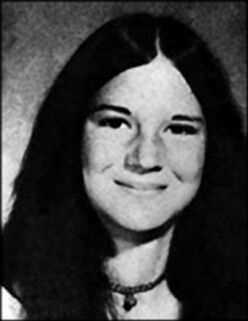Ted Bundy
REAL CRIMINAL
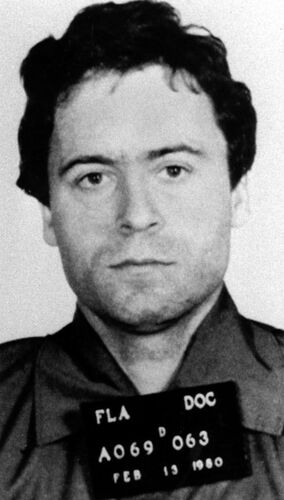
Name
Theodore Robert Bundy
Alias
Theodore Robert Cowell (birth name)
Ted Bundy
The Campus Killer
Richard Burton
Chris Hagen
Officer Roseland
Rolf Miller
Kenneth Misner
The Lady Killer
Numerous others
Gender
Male
Birth Date
November 24, 1946
Place of Birth
Burlington, Vermont
Date of Death
January 24, 1989 (aged 42)
Place of Death
Florida State Prison at Starke
Occupation
Grocery clerk
Stocker
Rockefeller campaign manager
Numerous others
Pathology
Serial Killer
Serial Rapist
Necrophiliac
Hebephile
Ephebophile
Abductor
Serial RapistAbductor
Signature
Luring victims by feigning injury
Modus Operandi
Abduction and rape
Strangulation and/or bludgeoning
Drowning (once)
Type
Organized lust
No. of Victims
21-32+ killed
5-6 attempted
Span of crimes
January 4, 1974 – February 9, 1978 (confirmed)
August 31, 1961-February 9, 1978 (possible)
Sentence
Two death sentences
Apprehended
August 16th, 1975
Status
Deceased
(executed by electric chair)
“
So what’s one less? What’s one less person on the face of the planet?
”
— Bundy
Theodore Robert “Ted” Bundy (born Theodore Robert Cowell) was a prolific hebephilic, ephebophilic, and necrophilic American serial killer, serial rapist, and abductor who was active in several states in the 1970s. He’s considered one of the most infamous serial killers in U.S. history.
Background
Bundy was born in Burlington, Vermont, to Eleanor Louise Cowell. His father’s identity remains unknown. For most of his life, Bundy was raised to believe that his grandparents, Samuel and Eleanor, were his actual parents and that Louise was his older sister. He didn’t find out that “Louise” was his mother until his college years. This was done to avoid any social stigma placed on Louise for being an unwed mother. He lived with Louise in a house in Philadelphia, Pennsylvania. There, Louise had Bundy’s surname changed from Cowell (at that time) to Nelson. Later, when the two moved to Tacoma, Washington, Louise met a man named Johnny Culpepper Bundy at a local church function. They were soon married, and Johnny adopted him, thus changing his surname to “Bundy”. Johnny treated Bundy well, including him on the camping trips and other outdoor activities he often took with his and Louise’s own children. Despite this, Bundy remained distant from his stepfather. During high school, Bundy was often isolated from other kids his age. He couldn’t seem to understand teenage social behavior but was skilled in “faking it”, indicating a propensity towards psychopathy. He stated once that, “I didn’t know what made things tick. I didn’t know what made people want to be friends. I didn’t know what made people attractive to one another. I didn’t know what underlay social interactions.”
It was during this time that Bundy developed a compulsion for thievery and shoplifting. He typically stole skiing equipment and forged ski lift tickets to support his interest in the sport. In college, Bundy studied Psychology and Asian studies. He worked at various jobs (never longer than a few months at a time), such as bagging groceries, stocking shelves, and working at a suicide hotline. During this time, he met writer Ann Rule, with whom he became friends. Ann would later write a defensive biography of Bundy entitled, “The Stranger Beside Me” and also wrote more true crime books, one of which was about the Green River Killer case. After a breakup with a fellow student, who cited immaturity and lack of ambition as her reasons, Bundy became depressed and dropped out of school. He returned to Burlington and, by doing a search of public records, discovered his true parentage. After this, he became more focused and dominant. Returning to Washington, Bundy became Campaign Manager for Nelson Rockefeller’s campaign for Presidency. He enrolled in the University of Washington as a psychology major and became an honor student who was well-liked by professors and students alike. Bundy’s personality underwent a major paradigm shift; from shy and introverted, to confident and social.
Killings, Conviction, and Execution
Shortly after midnight on January 4, 1974, Bundy made his first confirmed murder attempt. He broke into the basement bedroom of a female student at the University of Washington, bludgeoned her in her sleep and sexually assaulted her. She survived but suffered permanent brain damage. Over the following four months, he killed three students; another from the University of Washington on January 31, one from Evergreen State College on March 12 and one from Central Washington State College on April 17. On July 4, Bundy was descending the Yakima River with his girlfriend, Liz Kloepfer, when he pushed her into the water without a word or apparent motive. Kloepfer returned to the boat without Bundy’s assistance, who stood still as if he was seeing through her. Ten days later, on July 14, Bundy inquired Kloepfer until he learned that she was going to suntan at Carkeek, near Seattle. Kloepfer assumed that Bundy wanted to join her there, but he went instead to Lake Sammamish. There he wore a fake arm cast and imitated a British accent to request assistance from young female holidaymakers until two, Janice Ott and Denise Naslund, went with him roughly four hours after one another. It is believed that Bundy forced one of the women to watch him as he raped and killed the other before also killing her. Their skeletons were found on September 6 in an abandoned road four miles from the lake, along with that of Georgann Hawkins, a University of Washington student who had disappeared on June 12. Both Ott and Hawkins were missing their heads.
Based on a large number of witnesses, the authorities released a sketch of the suspect on the disappearances of Ott and Naslund, who was also said to have called himself “Ted” and driven a metallic brown Volkswagen Beetle. Among the people who reported Bundy were Kloepfer, one of his psychology professors, and Ann Rule. Because of his reputation as a clean-shaven and well-mannered student, the police paid no attention to their tips. Bundy cut his hair short and moved on to Salt Lake City, Utah on September 2, where he continued his studies in the University of Utah College of Law and became a member of The Church of Jesus Christ of Latter-Day Saints, though he never really attended any gatherings. During the first semester, he killed four more women, one of which was the daughter of a police chief. The next semester, 1975, he killed four more women, three of which were taken in Colorado. The fourth was 13-year old Lynette Culver, who was abducted from a school playground in Pocatello, Idaho, taken to a hotel room, and raped and drowned in a bathtub. As with a number of Bundy’s victims, her body was never found. He killed another girl, 15-year old Susan Curtis, during his summer break.
On August 16, he was pulled over when he wouldn’t stop for a police officer. Inside his car, the officer found balaclavas, gloves, a crowbar, handcuffs, and other items he suspected to be burglary tools. On March 1, 1976, he was sentenced to 1-to-15 years in prison for the kidnapping of Carol DaRonch, who he had tried to abduct in Utah in 1974 by pretending to be a police officer. In 1977, investigators had found enough evidence to charge Bundy with the January 1975 murder of Caryn Campbell, who had disappeared while on a ski trip and managed to extradite him to Aspen. At the Pitkin County courthouse, Bundy was allowed to visit the courthouse library. From there, he escaped through a window but was pulled over in a stolen car for having dimmed headlights and arrested again.
He was placed in a jail in Glenwood Springs, from which he escaped on December 30, 1977, by somehow getting his hands on a hacksaw and $500 and getting out through a crawlspace. By the time the jail staff realized that he was missing, he had already made his way to Chicago. After then spending some time at the University of Michigan in Ann Arbor and in Atlanta, he settled at Tallahassee, Florida on January 8, where he supported himself through shoplifting and purse snatching. On January 15, 1978, Bundy committed his first murders in almost two-and-a-half years. He broke into the Chi Omega sorority at the Florida State University, raped, strangled, and bludgeoned students, Lisa Levy, and Margaret Bowman. Two other students were also attacked but survived. The same night, he attacked another woman eight blocks away, she also survived.
On February 9, 1978, Bundy committed his last known murder. He abducted 12-year-old Kimberly Leach outside her school, raped and killed her and tried to hide the body in an abandoned hog shed. On the morning of February 15, he was arrested for driving a stolen vehicle and was quickly linked to the sorority murders. In the end, Bundy received two death sentences; one for the sorority murders and one for the murder of Kimberly Leach. Two pieces of evidence proved crucial: a set of bite marks on Lisa Levy’s buttocks and the testimony of a Chi Omega resident who hadn’t been present at the killings and saw Bundy leave the building. Bundy spent the better part of the 1980s fighting his sentence. During this time, he was interviewed by FBI profiler Robert Ressler, who found him uncooperative, and married Carole Ann Boone, a former co-worker, and had a daughter, Tina, with her in October 1982. When Bundy talked about the murders, he always did so in third-person and speaking hypothetically. As the execution date came closer, Bundy confessed to more murders for which he hadn’t previously been conclusively linked to. In October 1984, Bundy contacted the Green River Task Force and offered personal insights on the case, which hadn’t been solved at the time. At 7:06 a.m. on January 24, 1989, Bundy was executed by electric chair. His last words were “I’d like you to give my love to my family and friends.” In May of 2012, John Henry Browne, who defended Bundy during his final trial, claimed in a memoir describing his conversations with Bundy that he claimed to have killed over 100 people and that his first victim had been a man.
Modus Operandi
Bundy targeted brunette, petite Caucasian women aged 12 to 26 years old. All of the victims were either in college or had a middle-class background. While looking for his victims, he would consume large quantities of alcohol. His method of obtaining the victims varied; sometimes he would burglarize their homes and bludgeon them in their sleep, sometimes he would use an elaborate ruse, and sometimes he merely relied on his looks alone. The latter method was successful for Bundy because of the fact that women considered him to be good-looking and charming. In fact, this characteristic even allowed him to successfully abduct women in broad daylight, even if they were aware that a serial killer was present in the area. His facial features were also “unremarkable”; that is, though attractive, not especially memorable. This allowed him to completely change his appearance with only minor adjustments; a mustache, different hairstyle, a hat, etc. He would even disguise himself as a police officer or a firefighter to gain his victim’s trust. Sometimes, Bundy would use a fake cast, have his arm in a sling, or use crutches to play on a potential victim’s sympathy. He would ask them for the assistance of some kind, such as helping him put something in his car or asking for directions. They were then struck in the head with a crowbar, shoved into his car, and forced to wear handcuffs.
His initial attacks involved him raping them (either with incidental objects found in the victim’s bedroom or ones he brought with him) and then fatally bludgeoning them with a crowbar. Before raping his victims, he would have them remove their clothing (and later burn it after killing them, or in the case of Julie Cunningham, deposit it in a Goodwill Industries collection bin) or take off his own clothing to prevent the authorities from finding any trace evidence. He would later kill his victims by strangulation and would sometimes decapitate them post-mortem, keeping a few of their skulls as trophies. In one case, he cremated the severed head of one victim in a fireplace. When he killed Lynette Culver, he drowned her in a bathtub. When he attacked his victims at the Chi Omega sorority house, he bludgeoned all of them with a log.
Bundy would often visit his victims, whom he dumped at a site in Taylor Mountain. He admitted to applying makeup to the corpses, having sex with them, and would lie with them for hours afterward. He also dressed them in clothes that they never wore and apply nail polish that their families had never seen them use. Bundy also kept a collection of photos of his victims that he took with a Polaroid camera as a way of remembering the crimes.
Profile
“You feel the last bit of breath leaving their body. You’re looking into their eyes. A person in that situation is God!”
Dorothy Otnow Lewis, a psychologist who interviewed Bundy for seven hours, diagnosed him as a manic-depressive. She concluded that he committed his murders during depressive episodes. His pathology may have been due to his relationship with his grandfather, Samuel Cowell, a church deacon, who was described as a “tyrannical bully”. Samuel was a known bigot, who hated African-Americans, Hispanics, Italians, Catholics, and Jews. Bundy stated that Samuel also tortured small animals, including neighborhood dogs and cats, and kept an extensive collection of “odd” pornography in his greenhouse. It would later be revealed that the pornography was of a violent nature; rape, torture, and mock-snuff.
Known Victims
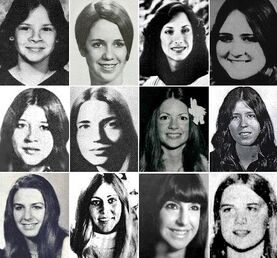
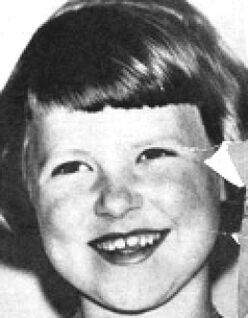
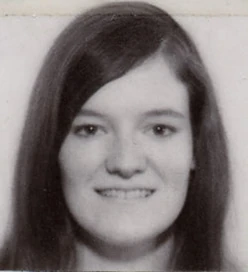
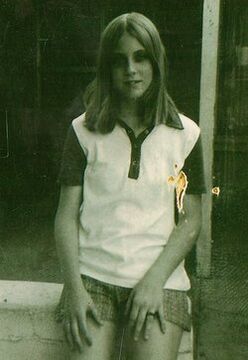
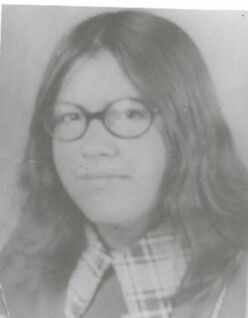
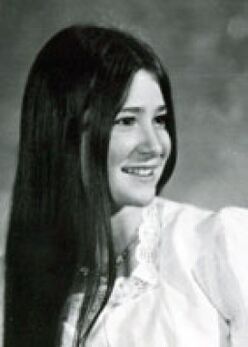
The locations denote where the victims were abducted or attacked.
Known
- 1974:
- January 4, Seattle, Washington: Karen Sparks, 18[1] (bludgeoned in her bed with a crowbar and sexually assaulted with a speculum; survived)
- February 1, Seattle, Washington: Lynda Ann Healy, 21 (bludgeoned while asleep, abducted from her house, and decapitated and dismembered post-mortem; her skull and mandible were found on March 3, 1975)
- March 12, Olympia, Washington: Donna Gail Manson, 19 (abducted and killed; body was never found)
- April 17, Ellensburg, Washington: Susan Elaine Rancourt, 18 (abducted and killed; her skull and mandible were found on March 3, 1975)
- May 6, Corvallis, Oregon: Roberta Kathleen “Kathy” Parks, 22 (abducted and killed; her skull and mandible were found on March 3, 1975)
- June 1, Burien, Washington: Brenda Carol Ball, 22 (abducted and killed; her skull and mandible were found on March 1, 1975)
- June 11, Seattle, Washington: Georgeann Hawkins, 18 (abducted, killed, and decapitated; her headless skeleton was found in September 6)
- July 4, Yakima River, Washington:
- Elizabeth “Liz” Kloepfer, 28 (his girlfriend; pushed off a rubber raft, survived)
- July 14, Lake Sammamish State Park, Washington, the “Double Event”:
- 12:20 AM: Janice Graham, 22 (attempted to abduct from the shore; escaped)
- 12:30 AM: Janice Ann Ott, 23 (abducted from the shore, killed, and decapitated; her headless skeleton was found on September 6)
- 4 PM: Sindi Siebenbam, 16 (attempted to abduct from the restrooms; escaped)
- 4:15 PM: Patricia Ann Turner (attempted to abduct from the restrooms; escaped)
- 4:20 PM Jacqueline Plischke (attempted to abduct from the shore; escaped)
- 4:40 PM Denise Marie Naslund, 19 (abducted from the restrooms and killed; her skeleton was found on September 6):
- September 2, unspecified location in Idaho: An unidentified teenage hitchhiker (confessed to killing; her body was never found)
- October 2, Holladay, Utah: Nancy Wilcox, 16 (assaulted and strangled; her body was never found)
- October 18, Midvale, Utah: Melissa Anne Smith, 17 (abducted, raped, sodomized, and strangled; her body was found nine days later)
- October 31, Lehi, Utah: Laura Ann Aime, 17 (abducted, raped, strangled, and bludgeoned with a crowbar; her body was found by hikers four weeks later)
- November 8:
- Murray, Utah: Carol DaRonch, 18 (abducted and intended to kill; she escaped by jumping out of his car)
- Bountiful, Utah: Debra Jean “Debby” Kent, 17 (abducted and killed; minimal skeletal remains not positively identified to hers were found)
- 1975:
- January 12, Snowmass, Colorado: Caryn Campbell, 23 (abducted, raped and bludgeoned; her body was found on February 15, 1975)
- March 15, Vail, Colorado: Julie Cunningham, 26 (abducted and killed; her body was never found)
- April 6, Grand Junction, Colorado: Denise Oliverson, 25 (body was never found)
- May 6, Pocatello, Idaho: Lynette Culver, 13 (abducted, raped and drowned in a bathtub; her body was never found)
- June 28, Provo, Utah: Susan Curtis, 15 (abducted and killed; her body was never found)
- 1978:
- January 15, Tallahassee, Florida:
- Two killed and two injured in the Chi Omega killings (all of the following were bludgeoned with a log as they slept):
- Margaret Bowman, 21 (also raped and strangled with a pair of pantyhose)
- Lisa Levy, 20 (also raped, bitten and strangled)
- Karen Chandler, 21 (survived)
- Kathy Kleiner, 21 (survived)
- Cheryl Thomas, 21 (bludgeoned in her bed just a few blocks away from the above killings; survived)
- Two killed and two injured in the Chi Omega killings (all of the following were bludgeoned with a log as they slept):
- February 9, Lake City, Florida: Kimberly Diane Leach, 12 (abducted, raped and killed; her skeletal remains were found)
- January 15, Tallahassee, Florida:
Possible
- August 31, 1961, Tacoma, Washington: Ann Marie Burr, 8 (disappeared; was never found)
- June 23, 1966, Seattle, Washington (both were bludgeoned with a log as they slept):
- Lisa E. Wick, 20 (survived)
- Lonnie Trumbull, 20 (killed)
- May 30, 1969, near Somers Point, New Jersey (both were stabbed to death; their bodies were found in the nearby woods three days later):
- Susan Davis, 19
- Elizabeth Perry, 19
- July 19, 1971, Burlington, Vermont: Rita Curran, 24 (raped, beaten, strangled and bludgeoned)
- 1973:
- June 29, West Linn, Oregon: Rita Lorraine Jolly, 17 (disappeared; was never found)
- August 20, Eugene, Oregon: Vicki Lynn Hollar, 24 (disappeared; was never found)
- November 24, near Olympia, Washington: Katherine Merry Devine, 14 (disappeared; her body was found; the murder was later attributed to one William E. Cosden in 2002)
- 1974:
- May 27, near Puyallup, Washington: Brenda Joy Baker, 14 (disappeared; her body was found a month later)
- July 1, Salt Lake City, Utah: Sandra Jean Weaver, 19 (disappeared; her body was found near Grand Junction, Colorado)
- August 2, near Vancouver, Washington: Carol L. Valenzuela, 20 (disappeared; her body was found two months later along with Martha Morrison)
- September 1974, near Vancouver, Washington: Martha Morrison, 17 (her body was found alongside that of Carol L. Valenzuela; remained unidentified for 41 years)
- 1975:
- April 15, Nederland, Colorado: Melanie Suzanne “Suzy” Cooley, 18 (abducted, bludgeoned and strangled; her body was found eight days later)
- July 1, Golden, Colorado: Shelly/Shelley[2] Kay Robertson, 24 (disappeared; her body was found a month later)
- July 4, Farmington, Utah: Nancy Perry Baird, 23 (disappeared; was never found)
- February 1976, Salt Lake City, Utah: Debbie Smith, 17 (disappeared; her body was found two months later)
- Notes:
- Minutes before his execution, Bundy was questioned about unsolved murders in New Jersey, Illinois, Texas, and Miami, Florida. Though he denied involvement in any of the cases, Bundy previously stated that he didn’t want to talk about certain murders he committed, leaving the cases still open.
- After his capture, Bundy was suspected of committing the so-called Santa Rosa Hitchhiker Murders, in which at least seven female hitchhikers were all murdered in Sonoma County and Santa Rosa in 1972 and 1973. Bundy had spent some time in neighboring Marin County, but was ruled out by a Sonoma County detective. In addition, it was proven that he was Washington on the dates of some of the victims’ disappearances.
- Before his execution Bundy claimed to his lawyer that he killed 100+ victims and that his first was actually a man.)
On Criminal Minds
Notes
- According to his FBI wanted poster, Bundy worked as a bellboy, busboy, cook’s helper, dishwasher, janitor, law school student, office worker, political campaign worker, psychiatric social worker, salesman, and a security guard.
- Interestingly enough, Michael Reilly Burke (who portrayed Bundy in the 2002 film of the same name) would go on to appear in the Season Six episode of the show, “Safe Haven”.
Sources
References

